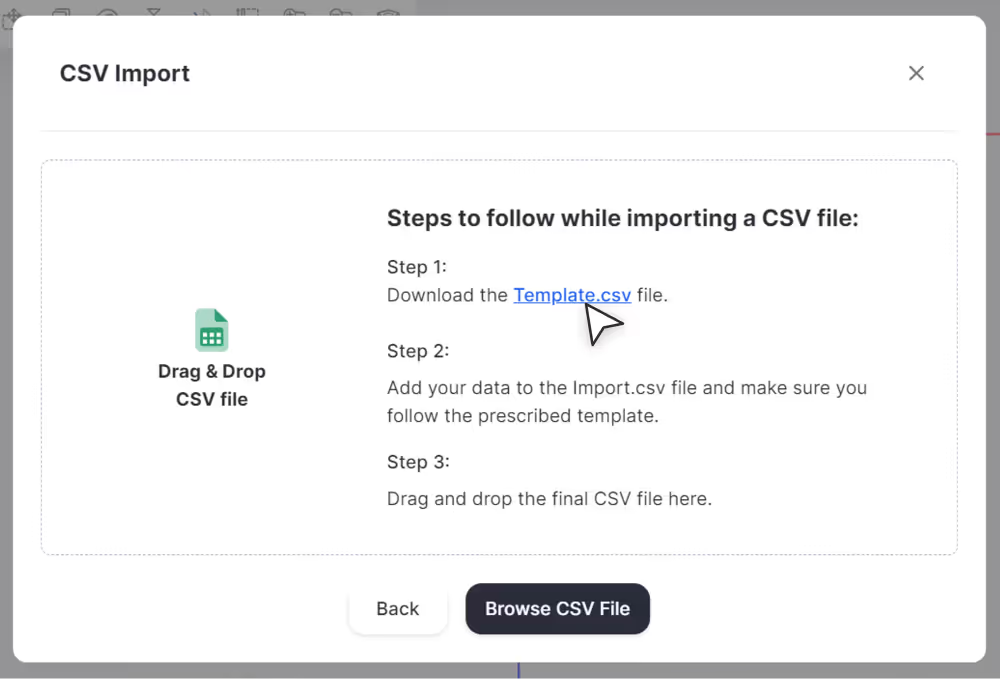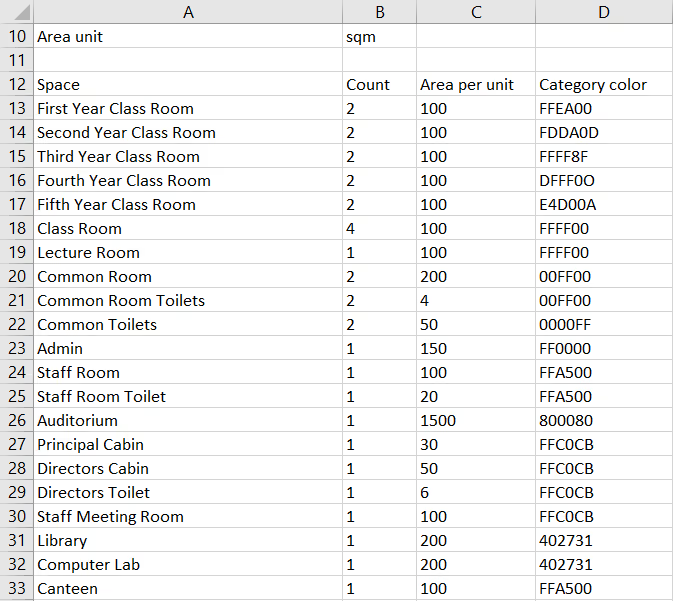March 8, 2024
V2.6.3
Program Import

Every architectural project starts with an area program. We're excited about the Program Import feature because it converts spatial program data from .csv files directly into 3D masses! This will help architects establish a spatial framework for the project, allowing more time to explore design solutions.
-Azhar Poonawala, Product Analyst
What’s New
Program Import
Introducing the all new Program Import, an efficient and streamlined method to translate spatial program data from .csv files into built masses. Snaptrude automatically creates spaces based on the given areas, accelerating the initial design process significantly.
Watch this video to see how the Import flow works.
- Click ‘Import’ from the menu bar. In the import modal that appears, you can now drag and drop .CSV files directly, or click on the ‘CSV’ button.
- Download the CSV file template, from the CSV Import modal.

- The first few rows in the template file contain some tips for filling in the CSV file. Here are a few things to keep in mind while filling in the fields before importing:
- Area Unit: To be filled in either sqm or sqft.
- Space: The name of a room that the user wants to typically work like a label on a space type object in Snaptrude.
- Count: Is the number masses the user would like to create with the same space name.
- Area per unit: Is the total area of each mass that would be created with the corresponding Space name & Count.
- Category color: Users can categorize spaces by assigning colors with HEX codes to the corresponding Spaces.

- Once your program is ready, simply Drag and Drop the CSV file into the modal or browse and import the file into Snaptrude.
- In case you miss out filling in a few fields in the CSV file, you will not encounter any hard error states. This is done to ensure minimum friction, showcasing the value of the feature as against accuracy.
- Area Unit: If the Unit area is empty in the CSV file, Snaptrude will automatically detect the project units and convert the areas per unit to match the units in the project settings.
- If the area unit in the CSV file does not match the project unit on Snaptrude, the spaces will automatically be converted from the areas mentioned in the CSV file to the project units.
- Space: If the space field is left blank in the CSV file, the masses will still get generated but the Mass label will show up as ‘default’ on Canvas.
- Count: If the Count field is left empty, Snaptrude automatically defaults the count as 1 with that label name.
- Area per Unit: If the Area per unit field is empty, that row of data will not get uploaded but all other rows in that csv file will get imported successfully.
- Category Color: If the category color column is not filled in or the HEX code filled by the user is of a wrong format, the masses will get uploaded but the masses will show up as the default grey color on Canvas.
- Spaces are created as squares with areas close to the inputted value, prioritizing whole number dimensions over exactitude.
- Imported spaces are organized by color code, size, and separated by a small distance on Canvas for clarity.
- Masses with multiple counts are linked instances, enabling edits to one to reflect on all unless made unique.
- Newly imported CSV data uploads masses to a blank space on Canvas, with the camera panning to the new uploads for immediate visibility.
- We have also added a new chart in the areas tab which allows you to visualize the imported spaces based on color. It gives an area-wise breakdown of each differently colored space.
What We’ve Improved
The following improvements have been made in this release:
- Label editing now requires double-clicking on the object or its label text, preventing unintended closure of the label text box when moving the cursor outside the object. Pressing 'Enter' confirms label changes.
- Fixed an issue where some masses would not get deleted after using the Create Building function.